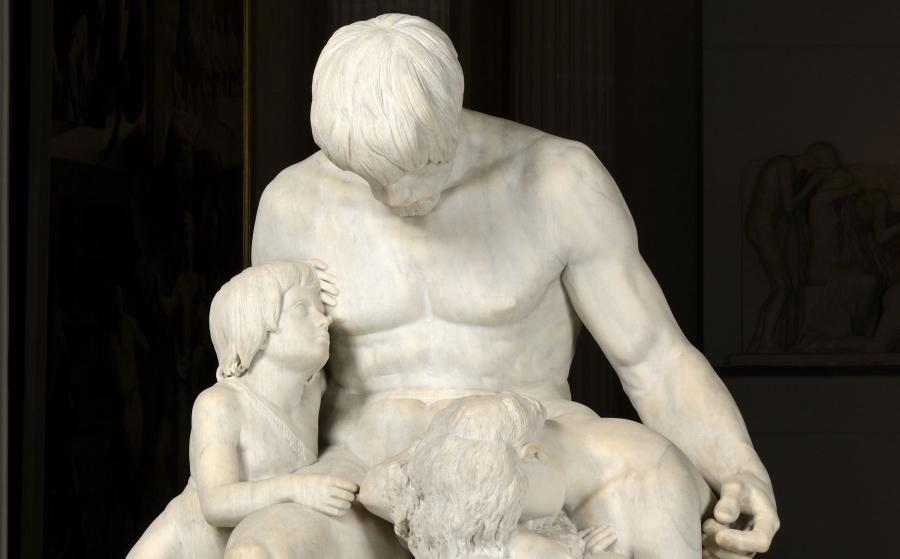Cain and his Race cursed by God
Information sur l’artiste
Antoine Étex [Paris, 1808 – Chaville, 1888]

Caïn et sa race maudits de Dieu, 1832-1839.
Image © Lyon MBA - Photo Alain Basset
For this sculpture, artist Antoine Étex took inspiration from the biblical story of Cain, son of Adam and Eve, who was cursed by God for killing his brother Abel. This harrowing tale of the origins of humanity was a favourite source of inspiration for many artists of the Romantic generation.
In the mid-19th century, France and Europe experienced considerable political, economic, and social upheaval. The industrial revolution, wars, increasing social inequality, and numerous regime changes prompted fear and uncertainty about the future. The artist chose this subject, magnified here by the colossal dimensions of the group carved in marble, to express the tragic nature of human destiny. The pyramidal composition reinforces this idea, as do the powerful forms inspired by Michelangelo: the sculptor from the Italian Renaissance was very popular at the time and was an inspiration for Étex.
When the young artist displayed the plaster model of this work at the Paris Salon of 1833, it was a veritable/true triumph which won him a place among the pioneers in the new Romantic school of sculpture, along with Antoine Louis Barye and François Rude. Shortly afterwards, the French government commissioned him to create this marble version, which was sent to the museum in Lyon.
1832-1839
Marble
H. 184; L. 169; D. 157 cm
Received from the French government in 1839; long term loan from the Centre national des arts plastiques
Inv. H 807





